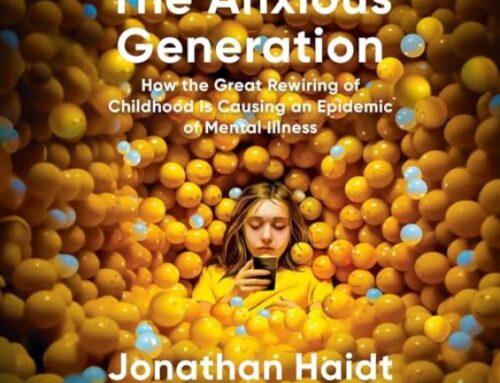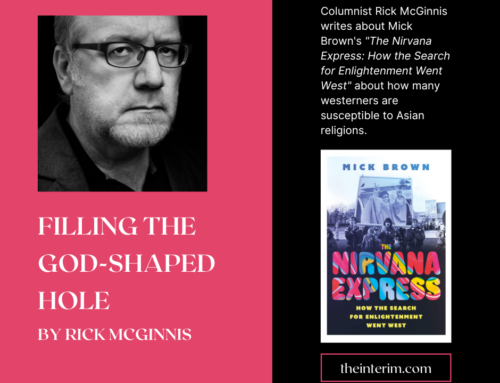 There’s a visual shorthand you see in movies and on TV shows that’s meant to let you know you’re in the presence of Roman Catholics, and probably Irish ones. It’s a picture of John F. Kennedy hanging on the wall of someone’s bedroom, dining room or living room, or in some bar, barber shop or police chief’s office. It might be accompanied by a portrait of whatever Pope is suitable to the time period, but the picture of JFK – usually the official White House portrait with Kennedy clasping his hands on a desk with a window behind him and the American flag just behind his left shoulder – signifies that you’re probably dealing with people fully loyal to the Democratic Party and the ideals it presumably expressed during its mid-century heyday.
There’s a visual shorthand you see in movies and on TV shows that’s meant to let you know you’re in the presence of Roman Catholics, and probably Irish ones. It’s a picture of John F. Kennedy hanging on the wall of someone’s bedroom, dining room or living room, or in some bar, barber shop or police chief’s office. It might be accompanied by a portrait of whatever Pope is suitable to the time period, but the picture of JFK – usually the official White House portrait with Kennedy clasping his hands on a desk with a window behind him and the American flag just behind his left shoulder – signifies that you’re probably dealing with people fully loyal to the Democratic Party and the ideals it presumably expressed during its mid-century heyday.
But the Democrats aren’t what they used to be (it’s worth debating if they ever really were) and there are signs that the longstanding public reverence and mythic status that the Kennedy family purchased with the assassination of John F. Kennedy might finally have reached its half-life, or even the long-delayed beginning of a sudden rush to diminution.
In the second season of The Crown, John F. Kennedy was portrayed by Michael C. Hall as cruel and cynical and in the thrall of a pharmaceutical drug habit. It was a sharp departure from the hagiographies that have played in cinemas and on TV since PT 109, released just months before his death. Playing JFK – a role undertaken by big names from Cliff Robertson, William Devane, James Franciscus and Martin Sheen to Patrick Dempsey, Bruce Greenwood, Greg Kinnear and Rob Lowe – had always meant embodying nobility and doomed idealism. Until now.
But the biggest hit the Kennedy myth has taken from the entertainment industry was released this year: a straightforward retelling of the incident at Chappaquiddick on Martha’s Vineyard in 1969, when Senator Edward Kennedy drove his car off a bridge into a pond and killed Mary Jo Kopechne, who had been a young campaign worker on his late brother Robert’s presidential campaign.
Kopechne’s death is regarded as the reason why Teddy Kennedy was never able to make the inevitable ascension to the presidency, though he remained in the U.S. Senate for another four decades. It’s invoked as part of the “Kennedy curse” – tactlessly, since it wasn’t a politician dead by an assassin’s bullet but a young woman drowned thanks to a Kennedy’s negligence.
It has always been the Achilles’ Heel of the Kennedy myth, the weak point from which the rest of the Camelot fantasy would begin to crumble, which explains why it took almost five decades for a film version to get made. Even then, Chappaquiddick executive producer Byron Allen told Varietymagazine that, “there are some very powerful people who tried to put pressure on me not to release this movie.” He added: “They went out of their way to try and influence me in a negative way. I made it very clear that I’m not about the right, I’m not about the left. I’m about the truth.”
In a short documentary that comes with the DVD of Chappaquiddick, everyone keeps insisting that there’s no political agenda behind the film, and they hoped to explore the human tragedy behind the story by sticking closely to the facts, and perhaps even discover some sympathy for Ted Kennedy and his actions that weekend.
Unfortunately, the facts don’t paint a very flattering picture of Kennedy, his family, or the extended network of retainers and advisers who arrive at the family compound at Hyannis Port to salvage as much of the reputation and political future – of both Teddy Kennedy and the Kennedys – as they can.
Crawling from the water, Kennedy leaves Kopechne in the car and walks back to the party they’d just left. His first words to Joe Gargan, his best friend and right-hand man, are “I’m not going to be president,” and what follows is a study in self-interest and self-pity. Kennedy’s actions would be reprehensible if he were a mere citizen involved in a drunk-driving accident, but he becomes contemptible as the incident escalates into a national story that the cadre of Kennedy loyalists tries to steer to its advantage.
Even at the time, newspapers couldn’t help but remark at the political and legal talent that convened around Teddy. In his 1982 book The Kennedy Imprisonment: A Meditation on Power– one of the few sharp departures from Kennedy hagiography published in the first two decades after JFK’s death – Garry Wills notes that these were the same men who advised his brothers during the Cuban missile crisis and at the start of RFK’s ill-fated run for the presidency. “Each crisis is major if a Kennedy is involved, and the missile team gathers,” Wills writes. “The frightening thing is not that courtiers should assemble to help Edward Kennedy after a car accident. The frightening thing is that making Kennedys look good was no doubt an important motive for these courtiers during the missile crisis itself.”
Thanks to the baleful price paid at Chappaquiddick, we were spared a Ted Kennedy presidency, but that didn’t stop the increasingly rapid mutation of politics into marketing, spin, and the cultivation of self-serving myths that – at least at this point in time – it’s only possible to get half the population to believe at any time.
It’s doubtful if Chappaquiddickwould have been made while Ted Kennedy was still alive, and the ever-thinner accomplishments of subsequent generations of Kennedys is making it possible to be more openly critical of the family and its myths. This is doubtless helped by the imminent passing of the generation whose youthful idealism was bound up in Camelot, and by the younger ones unsettled by the sexism and entitlement inherent in the story of Joe Kennedy and his boys.
Ted Kennedy, the “Lion of the Senate,” was a standard bearer for American liberalism throughout his long career, but it’s doubtful if he would have been re-elected to the Senate today after a Chappaquiddick; the Kennedy myth is far too redolent of hated white male privilege in the age of #MeToo.
In the movie, Jason Clarke as Teddy admits to his father – a terrifying Bruce Dern, paralyzed and nearly mute but burning with Joe Kennedy’s famous wrath – that he never wanted to be president, but that his wishes were never under consideration. Perhaps he never even wanted to be one of the longest-serving senators ever, but Teddy persevered in the only role he had left, and when he died he was buried with full ritual at Boston’s Basilica of Our Lady of Perpetual Help, despite his long political support for abortion. But just as Massachusetts had been the political base of Teddy and his brothers, despite the fact that they had really been raised in New York City, the Kennedys used the Church as a flag of convenience, and the Church – like Boston – happily let itself be used.
“A nun who taught my daughter in parochial school kept a picture of President Kennedy in her classroom and spoke of him as a saint,” Garry Wills writes in The Kennedy Imprisonment, reminding us that every cliché has its roots in real life. He adds that, “it is fairly certain that she will not look at Edward Kennedy through the same haze of hagiography.”
The most chilling moment in Chappaquiddickhappens at the end of the film, in a montage of real interviews done with the public at the time of the incident. Some are appalled at Ted’s actions, and the lack of punishment he received. Many, though, admit that while they were disappointed with the senator, they didn’t feel they could judge him, and would definitely vote for him again.
It’s a glimpse of the political tribalism that made it possible for Bill Clinton to be a feminist hero despite all the undermining evidence. We might have the worst political class in at least a century, but they’re being defended with more ardour than ever before despite – or perhaps because – of the lack of any real alternatives.




